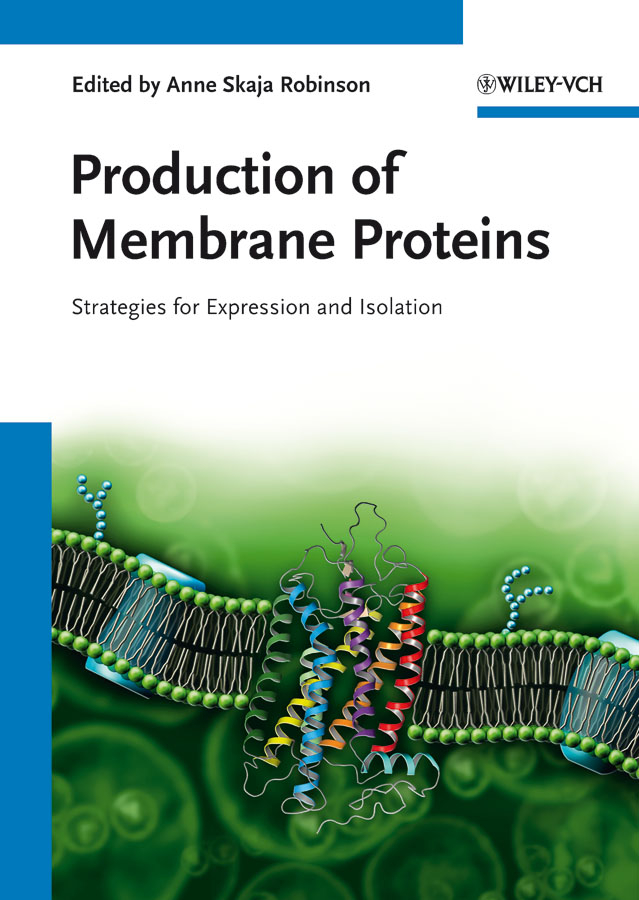
Production of membrane proteins: strategies for expression and isolation
Robinson, Anne Skaja
Designed as a research-level guide to current strategies and methods of membrane protein production on the small to intermediate scale, this practice-oriented book provides detailed, step-by-step laboratory protocols as well as an explanation of the principles behind each method, together with a discussion of its relative advantages and disadvantages. Following an introductory section on current challenges in membrane protein production, the book goes on to look at expression systems, emerging methods and approaches, and protein specific considerations. Case studies illustrate how to select or sample the optimal production system for any desired membrane protein, saving both time and money onthe laboratory as well as the technical production scale. Unique in its coverage of 'difficult' proteins with large membrane-embedded domains, proteins from extremophiles, peripheral membrane proteins, and protein fragments. INDICE: Preface. List of Contributors. Introduction (Anne Skaja Robinson and Patrick J. Loll). Part One Expression Systems. 1 Bacterial Systems (James Samuelson). 1.1 Introduction. 1.2 Understanding the Problem. 1.3 Vector/Promoter Types. 1.4 T7 Expression System. 1.5 Tunable T7 Expression Systems. 1.6 Other Useful Membrane Protein Expression Strains. 1.7 Clone Stability. 1.8 Media Types. 1.9 Fusion Partners/Membrane Targeting Peptides. 1.10 Chaperone Overexpression. 1.11 Cautionary Notes Related to Chaperone Overexpression. 1.12 Emerging Role of Quality Control Proteases. 1.13 Tag Selection. 1.14 Potential Expression Yield. 1.15 Strategies to Overcome Protein Instability. 2 Membrane Protein Expression in Saccharomyces cerevisiae (Zachary Britton, Carissa Young, Özge Can, Patrick McNeely, Andrea Naranjo, and Anne Skaja Robinson). 2.1 Introduction. 2.2 Getting Started. 2.3 Special Considerations. 2.4 Case Studies. 2.5 Conclusions. 3 Expression Systems: Pichia pastoris (Fatima Alkhalfi oui, Christel Logez, Olivier Bornert, and Renaud Wagner). 3.1 Introduction. 3.2 A (Brief)Summary on the (Long) History of P. pastoris. 3.3 Introducing P. pastoris as a Biotechnological Tool: Its (Extended) Strengths and (Limited) Weaknesses. 3.4 Basics of the P. pastoris Expression System. 3.5 Successful Large-Scale Expression of Membrane Proteins Using P. pastoris. 3.6 Guidelines for Optimizing Membrane Protein Expression in P. pastoris Using GPCRs as Models. 3.7 Conclusions and Future Directions. 4 Heterologous Production of Active Mammalian G-Protein-Coupled Receptors Using Baculovirus-Infected Insect Cells (Mark Chiu, Brian Estvander, Timothy Esbenshade, Steve Kakavas, Kathy Krueger, Marc Lake, and Ana Pereda-Lopez). 4.1 Introduction. 4.2 Experimental. 4.3 Conclusions and Future Perspectives. 5 Membrane Protein Expression in Mammalian Cells (Deniz B. Hizal, Erika Ohsfeldt, Sunny Mai, and Michael J. Betenbaugh). 5.1 Introduction.5.2 Mammalian Systems. 5.3 Case Studies. 5.4 Conclusions. 6 Membrane Protein Production Using Photosynthetic Bacteria: A Practical Guide (Philip D. Laible,Donna L. Mielke, and Deborah K. Hanson). 6.1 Introduction. 6.2 Preparation ofExpression Constructs. 6.3 Transfer of Plasmid DNA to Rhodobacter via Conjugal Mating. 6.4 Small-Scale Screening for Expression and Localization of Target Protein in Rhodobacter. 6.5 Large-Scale Culture. 6.6 Detergent Solubilization and Chromatographic Purification of Expressed Membrane Proteins. 6.7 Protein Identifi cation and Assessment of Purity. 6.8 Preparations of Specialized Rhodobacter Membranes. Part Two Protein-Specifi c Considerations. 7 Peripheral Membrane Protein Production for Structural and Functional Studies (Brian J. Bahnson). 7.1 Introduction. 7.2 Case Studies of Peripheral Membrane Proteins. 7.3 Conclusions. 8 Expression of G-Protein-Coupled Receptors (Alexei Yeliseev and Krishna Vukoti). 8.1 Introduction. 8.2 Bacterial Expression of GPCRs. 8.3 Expression of GPCRs in Inclusion Bodies, and Refold
- ISBN: 978-3-527-32729-4
- Editorial: Wiley-VCH
- Encuadernacion: Cartoné
- Páginas: 442
- Fecha Publicación: 15/06/2011
- Nº Volúmenes: 1
- Idioma: Inglés
